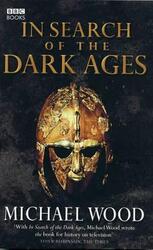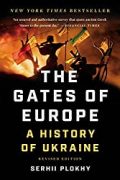
Rating: 8.2/10.
This history book covers the period of early English history from the beginning of the Roman settlement of the British Isles up until the Norman Invasion, which marked the end of the Anglo-Saxon period. This age after the fall of Rome until the Norman Invasion is generally considered the Dark Ages of England; in this period, the island was split into many small kingdoms with local (mostly Anglo-Saxon) rulers, and relatively little written history exists from this time. Each chapter focuses on a different ruler and their life story, one at a time; each is a compelling story about a historical figure, with sufficient detail to inspire curiosity while avoiding excessive academic complexity that might be found in scholarly works.
Chapter 1 is about Boudicca – she was a queen of the Iceni tribe of the Celtic-speaking people and is known for heroic rebellions against the Romans around 60 AD. Her forces destroyed a Roman legion and the city of London, and for some time, the Romans considered pulling out of the province of Britain entirely. However, she was defeated in a later battle, and this was documented by Tacitus.
Chapter 2 takes place after the collapse of Roman civilization in Britain, when things were normal for some time until the arrival of the Anglo-Saxons in the fifth century. King Arthur emerged as a mythical figure during this time, pictured as defending the British against the Anglo-Saxon invaders. However, the earliest verses that first mentioned him were written several hundred years after the fact and are contradictory, as they do not clearly paint him as a king, so it’s possible that he is entirely fictional or just a minor local tribal leader who was fighting other British tribes.
Chapter 3 is about the Sutton Hoo man, a grave dating to around 620 AD. It contained numerous items from around the continent, including the Byzantine and Merovingian empires, with items that signalled royalty. Although no body was found, it is considered likely to be a grave of either a king or a royal member, but there is some debate about who it is or which Anglo-Saxon king.
Chapter 4 focuses on the first major Anglo-Saxon king, Offa, who came from the Kingdom of Mercia during the 8th century. During this time, Mercia was one of many Anglo-Saxon kingdoms, and Offa was a powerful and brutal king who united the Anglo-Saxon kingdoms around the year 780. Some of his achievements included building an impressive dyke to defend against the raiding Welsh and establishing relations with Charlemagne in France. He was known for his brutal regime and for executing other rival Anglo-Saxon kings; he died at an old age and his kingdom did not last very long afterwards.
Chapter 5 takes place about a century later and focuses on Alfred the Great, who became king around 870. Similar to Offa, he also united tribes, but in a more peaceful way compared to Offa’s oppressive regime. A major event of this time was the start of many Viking invasions from the Danish, and Alfred’s forces were driven almost to the verge of defeat but were able to make a recovery and fight back. During his later years, he was educated and translated many books from Latin to Anglo-Saxon.
Chapter 6 is about Athelstan, who ascended to the throne in 925 AD. He was the grandson of Alfred the Great and was able to extract huge tributes from the Welsh, and was the first to rule over the whole British island. He maintained uniform laws and coinage over the kingdom and was able to hold off an alliance of Celtic and Scandinavian armies during his 14 years in power.
Chapter 7 brings us to the period after Athelstan, when Northumbrian control fluctuated between the English and Norse rulers. Eric Bloodaxe was the last king of Northumbria, and he came from a Danish royal family line. He was invited to be the king of York in 947, and during that time, York was a wealthy city with extensive foreign trade. Eric’s rule was relatively brief, consisting of two distinct periods, and he was defeated by the English in battle.
Chapter 8 is about Aethelred the Unready, who was one of the last and longest-reigning Anglo-Saxon kings with a 38-year reign, and he is mostly known for his poor reputation regarding his ineffectiveness at dealing with the Viking raids. He lost many battles and was forced to pay large sums of tribute. The name “Unready” mostly means “ill-advised”, butmModern historians think that his reputation is not entirely deserved since his reign was relatively stable and he attempted many ways of dealing with the invaders. After his death, his son Edward was defeated by the Danish king Canute in 1017.
Chapter 9, covers the end of the Anglo-Saxon age of England through the Norman invasion in 1066. William the Conqueror, who was the Duke of Normandy, had established a successful military career in France prior to the invasion. There were many factors at play in the days before the invasion, as King Harold of England had just defeated a Viking invasion in northern England and was faced with another invasion just days later from the Normans. In this second invasion, the English were defeated in the Battle of Hastings in 1066. Afterwards, the Normans quickly took control of the rest of England and changed the culture drastically.


